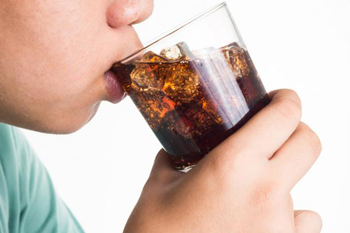Nov 16: Drinking colas and other sugary drinks is tied to an increased risk of so-called pre-diabetes, a precursor to full-blown disease, but diet soda is not, a recent study suggests.
 Previous studies on the link between diet sodas and diabetes have been mixed; some research pointing to a potential connection has suggested this relationship may be explained at least in part by soda drinkers being overweight or obese.
Previous studies on the link between diet sodas and diabetes have been mixed; some research pointing to a potential connection has suggested this relationship may be explained at least in part by soda drinkers being overweight or obese.
In the current study, however, adults who routinely consumed at least one can of soda or other sugar-sweetened beverages a day were 46 percent more likely to develop elevated blood sugar levels than people who rarely or never drink cola.
“Emphasis should be placed on substituting sugar-sweetened beverages with water, unsweetened teas, or coffee,” said senior study author Nicola McKeown, a nutrition researcher at Tufts University in Boston.
“For daily consumers of sugary drinks, kicking the habit may be a difficult challenge, and incorporating an occasional diet soda, while increasing fluids from other sources, may be the best strategy to ultimately remove sugar-sweetened beverages from the diet,” McKeown added by email.
Globally, about one in nine adults have diabetes, and the disease will be the seventh leading cause of death by 2030, according to the World Health Organization. Most of these people have Type 2, or adult-onset, diabetes, which happens when the body can't properly use or make enough of the hormone insulin to convert blood sugar into energy.
People with blood sugar levels that are slightly elevated, but not high enough for a diabetes diagnosis, are sometimes described as having “pre-diabetes” because many will go on to develop diabetes. In the current study, researchers examined data collected on 1,685 middle-aged adults over about 14 years.
At the start of the study, none of the participants had diabetes or pre-diabetes. They were 52 years old on average and typically overweight.
Participants completed questionnaires detailing what they ate and drank during the study period. Sugar-sweetened beverages were defined as colas and other carbonated beverages, as well as drinks such as lemonade and fruit punch. This didn’t include fruit juice.
People who drank the most sodas – typically around six 12-ounce cans a week – had a much greater risk of developing elevated blood sugar levels than other participants after adjusting for factors such as age, gender and weight, researchers report in the Journal of Nutrition.
Higher consumption of soda and other sugar-sweetened beverages was also associated with insulin resistance, a reduced ability to respond to the hormone insulin that is another risk factor for developing diabetes.
Even after accounting for changes in weight and other aspects of diet, the relationships between sugar-sweetened beverages and these metabolic risk factors for diabetes persisted.
Diet soda intake—defined as low-calorie cola or other carbonated low-calorie beverages— was not associated with elevated blood sugar or insulin resistance.
The study doesn’t prove soda or sugary drinks cause diabetes.
Another limitation of the study is that participants may not be representative of a typical U.S. adult, the authors note. People in the study were mostly white, middle aged and more likely to be women. They also tended not to be as overweight or thick around the middle as many U.S. adults, the authors point out.
Because pre-diabetic elevated blood sugar can often be reversed before it advances to full-blown disease, the findings suggest it makes sense for people to avoid regular sodas to minimize their risk of developing diabetes, the researchers conclude.
“Sugar sweetened beverages have been shown to increase weight gain and risk of diabetes – including prediabetes,” Laura Rosella, a public health researcher at the University of Toronto who wasn’t involved in the study, said by email.
The current study findings add to a large body of evidence suggesting that the sugar and calories in soda can contribute to the risk of obesity and diabetes, noted Dr. Robert Cohen, a researcher at the University of Cincinnati College of Medicine who wasn’t involved in the study.
“I wouldn’t necessarily seek out diet drinks but the choice of non-calorie containing diet drinks is not associated with further insulin resistance or pre-diabetes in the way that calorie containing drinks are,” Cohen said by email.






Comments
Add new comment